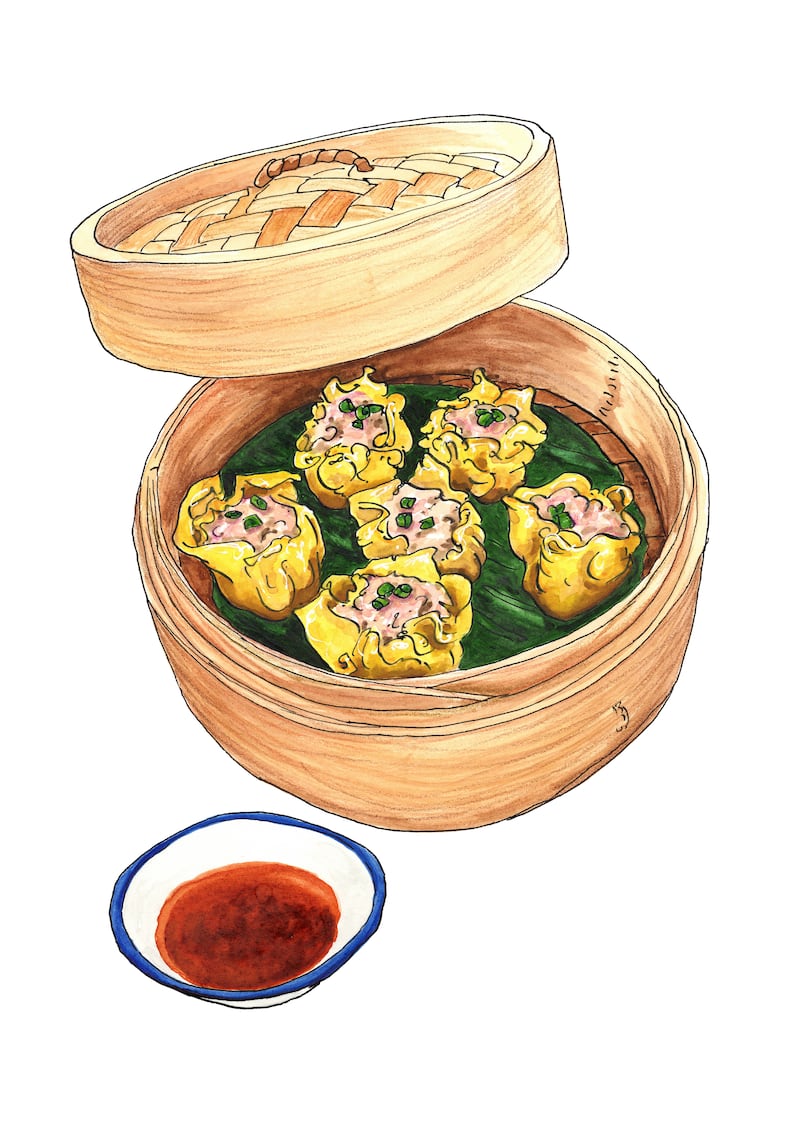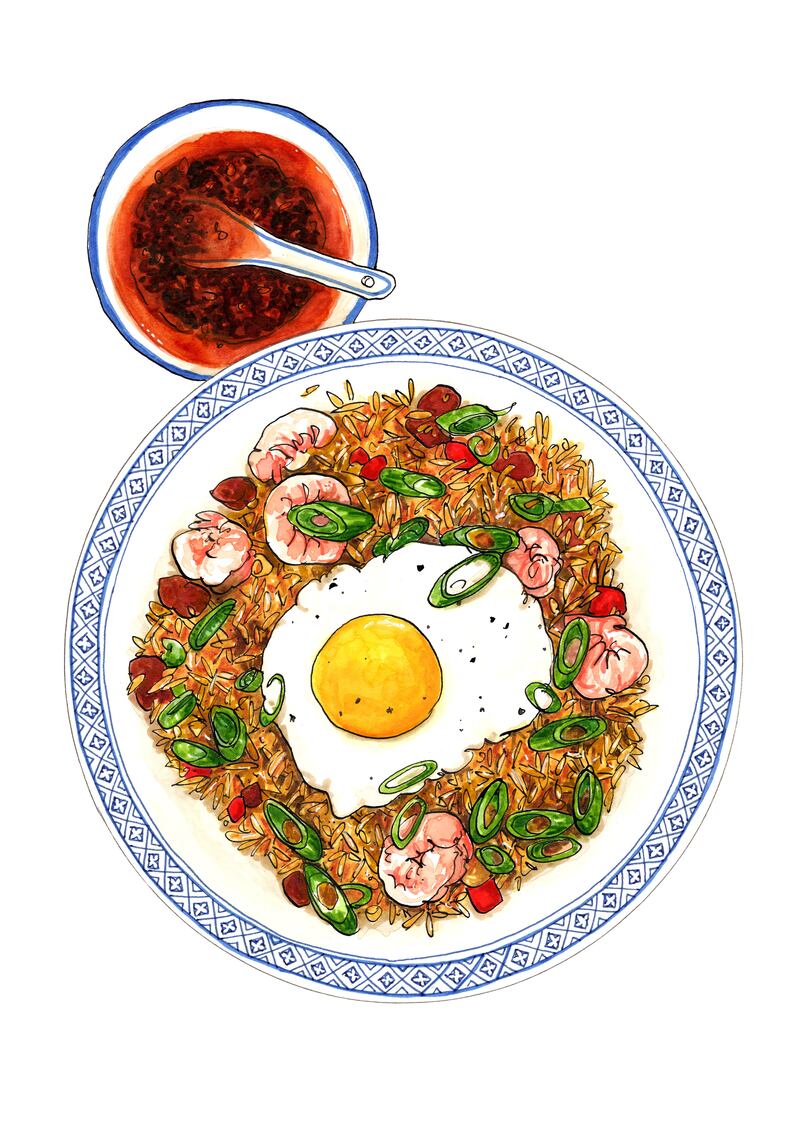Kwanghi Chan, who was born in Hong Kong and raised in Donegal, has worked as a chef in a Michelin-star restaurant, established his own Chan Chan food brand and has a number of Asian fast food outlets, Bites by Kwanghi. He is a regular guest chef on TV and has just published his first cookbook, Wok, which is part of the Blasta Books series. Here is a selection of recipes from the book that can be prepared at home for an authentic taste of Chinese food.

Dan dan noodles
Serves 4
There are two types of dan dan noodles: the traditional version from Sichuan street food, which is dry and served in small portions, and the controversial Hong Kong version, which is soupy. Personally, I prefer the soupy version and I like mine with more spicy sauce coating the noodles. Either way, you’ll see why this bowl of noodles enjoyed by emperors is so famous around the world.
READ MORE
INGREDIENTS
1 tbsp vegetable oil
350g lean pork mince (get your butcher to grind a pork chop for you)
3 garlic cloves, grated
2 tbsp grated ginger
1 tbsp hoisin sauce
1 tbsp Chinese black vinegar
2 tsp soy sauce
300g thick wheat noodles, such as ramen noodles
FOR THE SAUCE:
3 tbsp soy sauce
3 tbsp water
2 tbsp ChanChan Black Garlic and Peanut Chilli Rayu or Chinese chilli oil
2 tbsp sesame oil
1 tbsp honey
1 tbsp Chinese black vinegar
2 tsp tahini
TO FINISH:
a handful of fresh coriander, chopped
a handful of ChanChan Spice Bag Nuts or roasted cashews, roughly chopped
2 spring onions, thinly sliced at an angle
METHOD:
Heat the vegetable oil in a large heavy-based wok or heavy-based non-stick frying pan over a medium-high heat. When the oil starts to smoke, add the pork mince, breaking it up with a wooden spoon. Cook until the pork is deeply browned and crisp – there will be some fat in the wok or pan from cooking the mince, but that’s fine. Add the garlic and ginger and cook for 1 minute, just until fragrant, then add the hoisin sauce, black vinegar and soy sauce and cook until the liquid has reduced by half to intensify the flavour.
In a large bowl, whisk together all the sauce ingredients. Set aside.
Cook the noodles in a saucepan of boiling water according to the packet instructions. Drain, then add the cooked noodles to the sauce in the bowl, tossing to coat.
Divide the noodles between four serving dishes and top each one with pork. Garnish with the coriander, chopped nuts and spring onions and drizzle with a little more rayu or chilli oil if you like an extra kick.

Pork and prawn steamed siu mei dumplings
Makes 80
If you’re going out for dim sum, you always order siu mei – it’s one of those dumplings that you just have to eat. The smooth, bouncy texture of the pork and prawns blended together, encased in a wonton wrapper and steamed is the Holy Grail of the Cantonese dim sum house. There is even a cheaper street food version in Hong Kong that you buy on a stick.
INGREDIENTS
1 x 200g pack of wonton wrappers
FOR THE FILLING:
150g lean pork mince
150g tiger prawns (thawed if frozen), finely chopped
2 spring onions, green tops only, finely chopped
3 tbsp oyster sauce
2 tsp light soy sauce
2 tsp toasted sesame oil
½ tsp potato starch or cornflour
¼ tsp caster sugar
¼ tsp ground white pepper
TO SERVE:
light soy sauce
ChanChan Black Garlic and Peanut Chilli Rayu or Chinese chilli oil
Chinese black vinegar
METHOD:
Line a plate or baking tray with parchment paper.
Put all the filling ingredients in a large bowl. Using a pair of chopsticks, mix everything together for at least 5 minutes. You need to mix it for this long so that the protein in the prawns starts to become bouncy and the filling becomes a glossy paste.
To assemble, place 1 full teaspoon of the filling in the centre of a wrapper, then squeeze the sides to form a cup shape around the filling, leaving the wrapper open on top. Use the back of a teaspoon to smooth the top of the filling and level it out to the outer edges of the wrapper. Set on the lined plate or tray and repeat with the remaining wrappers and filling.
Bring a large saucepan of water to the boil. Gently place the dumplings in a bamboo steamer, keeping the parchment paper underneath them so that the dumplings don’t stick to the bamboo and break when cooked. Steam the dumplings, covered with the lid, for about 7 minutes on full steam.
Serve immediately in the steamer basket with a plate set underneath. These dumplings are perfect dipped in soy sauce and chilli oil, but I also like them with Chinese black vinegar.
Prawn and chorizo fried rice

Serves 4
I love mixing ingredients from totally different cultures and countries. There is a Chinese cured sausage that’s a bit like chorizo, as the fat and oil that render out from the sausages coat the rest of the ingredients with flavour just like chorizo does. I’ve added prawns to give it a Spanish paella kind of vibe but with an Asian difference. I love fried rice dishes for supper. I always have leftover cooked rice in the fridge so it’s also a perfect snack, as it takes very little time to reheat it in a wok.
INGREDIENTS
1 tbsp vegetable oil
100g dry-cured chorizo, diced
200g frozen black tiger prawns, peeled and thawed (or you could use Dublin Bay prawns)
1 small onion, finely diced
1 small red pepper, finely diced
2 garlic cloves, grated
1 tsp smoked paprika
2 eggs, beaten
400g cooked and chilled jasmine rice
3 tbsp light soy sauce
2 spring onions, thinly sliced at an angle
TO SERVE (OPTIONAL):
Chinese chilli oil or sriracha
fried egg
METHOD:
Heat the oil in a large wok or frying pan over a medium heat. Add the chorizo and cook for about 5 minutes, until it’s golden brown and has released its oils. Use a spider or slotted spoon to transfer the chorizo to a plate or bowl. You want about 2 tablespoons of oil left in the wok or pan, so pour some off if you have too much.
Add the chorizo back to the wok or pan along with the prawns, onion, pepper, garlic and paprika and cook for about 2 minutes, just until the prawns have turned pink but the vegetables are still crunchy. Add the beaten eggs and cook for 1 minute, stirring to scramble the eggs. Add the cooked rice and use the back of a long-handled spoon to break up any lumps. Stir-fry until all the rice is piping hot (at least 74°C/165°F), then mix in the soy sauce. Keep your wok moving at all times to control the heat so that nothing burns.
Scatter over the spring onions, transfer to a bowl and serve immediately. The fried rice is delicious just as it is, but you can add a little kick to it if you like with a drizzle of Chinese chilli oil or sriracha. A fried egg with a soft yolk would be lovely on top so that the yolk runs into the rice.
Blasta Books #4: Wok by Kwanghi Chan (€15) is published by Blasta Books (blastabooks.com).













